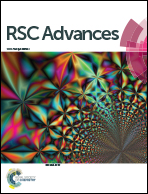A highly conductive quasi-solid-state electrolyte based on helical silica nanofibers for lithium batteries†
Abstract
The replacement of flammable liquid electrolytes by inorganic solid ones is considered the most effective approach to enhancing the safety of Li batteries. However, solid electrolytes usually suffer from low ionic conductivity and poor rate capability. Here we report a unique quasi-solid-state electrolyte based on an inorganic matrix composed of helical tubular silica nanofibers (HSNFs) derived from the self-assembly of chiral low-molecular-weight amphiphiles. The HSNFs/ionic liquid quasi-solid-state electrolyte has high thermal stability (up to ∼370 °C) and good ionic conductivity (∼3.0 mS cm−1 at room temperature). When tested as the electrolyte in a LiFePO4/Li cell, excellent rate capability and good cycling stability are demonstrated, suggesting that it has potential be the electrolyte for a new generation of safer Li batteries.



 Please wait while we load your content...
Please wait while we load your content...